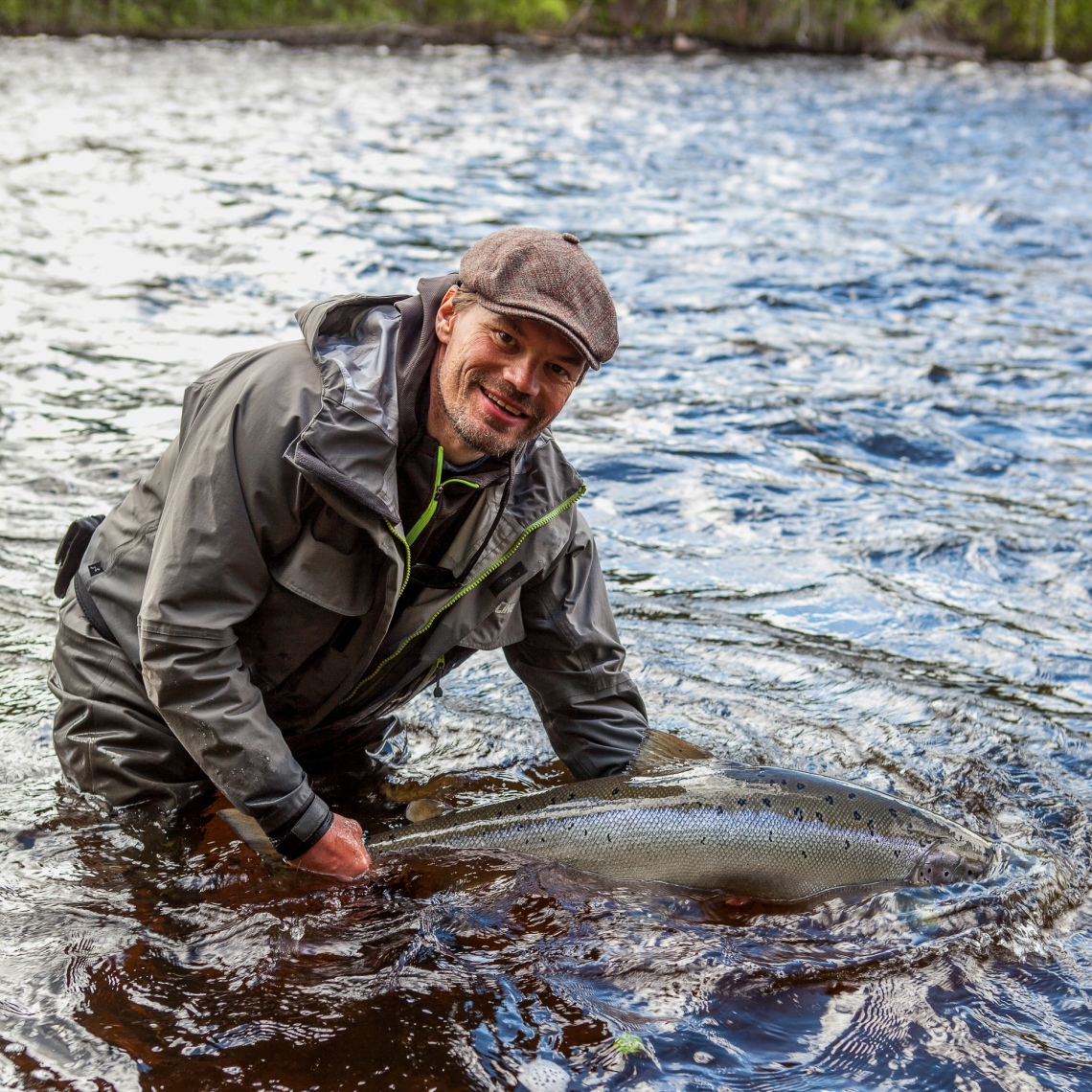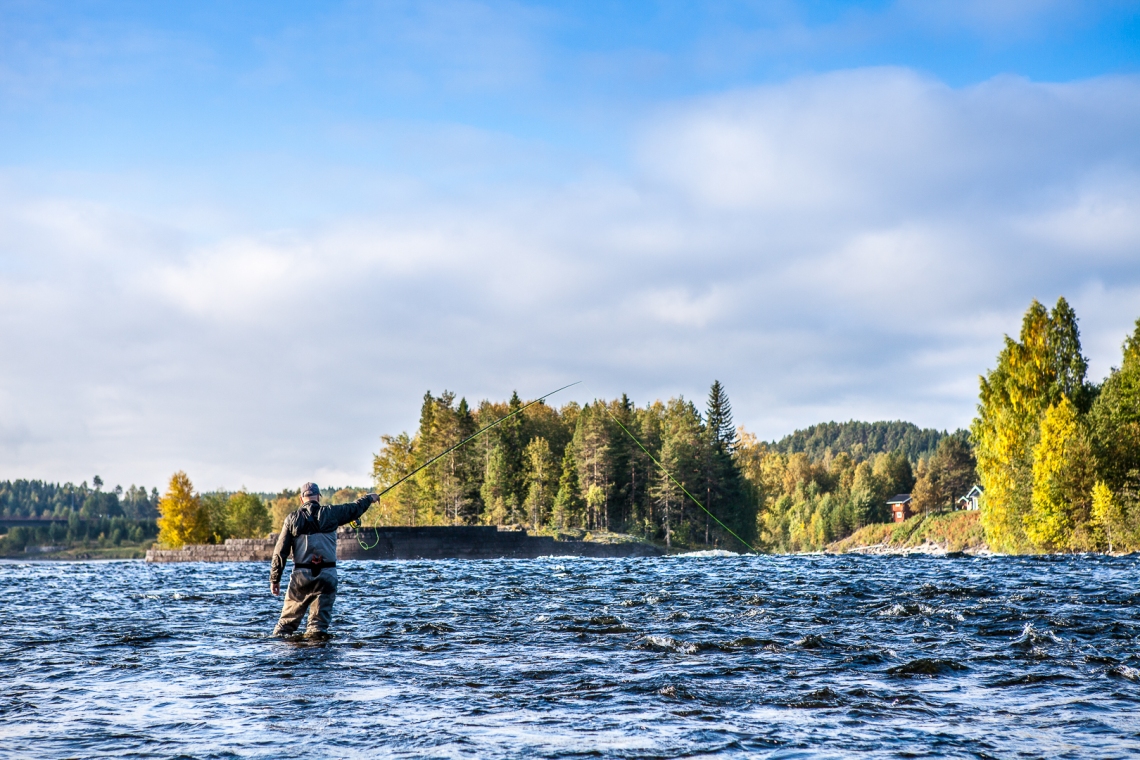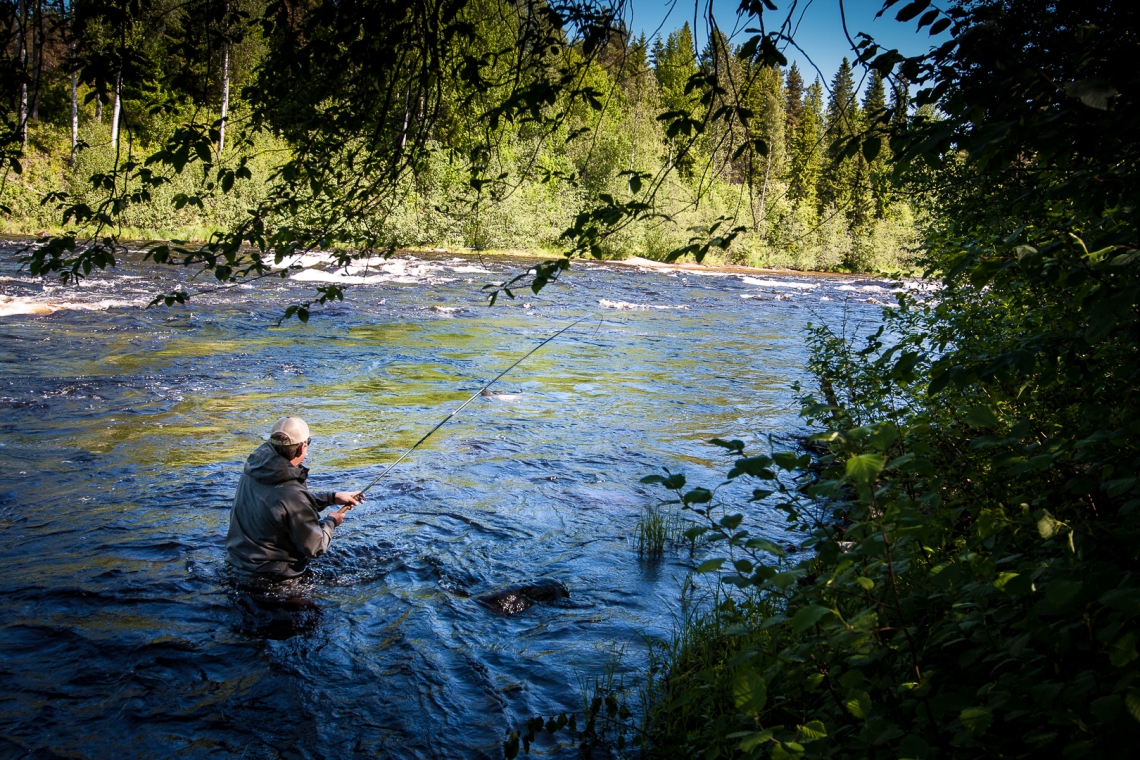By Kalle Grahn – Guideline Power Team Sweden
Photos by Kalle Grahn, Johannes Poignant & private.
The trend towards shorter rods, lighter classes and lower weights is stronger than ever. Indeed, likable characteristics out there on the water. Shorter rods and modern lines facilitate casting that we could only dream of just ten years ago. The new ULS hybrids and ULS lines are a solid proof of that. It works great! But still Guideline market and sell a fair share of 15’, 16’ and even 17’ rods. Cold water temperatures and early season fishing demand a different set of tools. This long rods are excellent tackles for cold water tactics and early success in the salmon rivers of Scandinavia.

Older fishermen refer to fishing long rods as backbreaking heavy labor. The reason then for the long rods was primarily the need for a tool that could handle the long lines of the days. Many times, I’ve received a raised eyebrow from these weathered veterans, now days long time converted to lighter tackle, why the long heavy rods? Well, the rods are obviously not as heavy as they were in the days. But for me it’s the question of a proper tool box and the right equipment for the right situation. The apparent reason to fish with a longer rod is to cast longer and cover more water. But there is much more to it.

Long rods are, except for the cover of more water motive, a question of proper and intelligent cold- and high-water tactics. In theory, you can cover almost the same amount of water with a short rod by casting more across the river. But you can rest assured that you will not catch any fish this way – not in cold waters. It’s all about speed. Or it’s actually all about minimizing speed, placing your casts and fish accordingly. The tools are longer rods and shorter shooting heads.

Long casts are necessary to perform cold water fishing in a proper way. And they must be straight and stretched. Never air mend. Casts should be placed at a low angel, let the right sinking head take you down the water column, if necessary, walk the line down to get it even deeper. Prevent the current from arching the line by high poking the rod and holding the tip of the rod out over the water. You want to fish totally opposite to the way you fish a warm summer river and present the fly for as long as possible over a potential lay. A straight line from the rod tip all the way down to the fly deep in the river is what you want to aim for.

A long low angle cast with the rod held in a high position decreases the speed of the fly. A shorter shooting head lessens the impact on the line by the current – keep it straight. What you now present to the fish is a slow moving, easy eating peace of food. Exactly what fish in cold waters want. The fly is presented tail first, to predatory fish, this is the definition of easy prey. The way you fish the fly is controlled by the position of the rod tip. If you want to fish the fly all the way to the riverbank, if it’s deep enough there, just point the rod tip down and a little bit inland at the very end of the swing and let the current do the last of the work.

You should be aware that the position of rod tip highly affect the speed and the way the fly fish. Fishing the fly deep with heavy sinking lines and then lowering the rod tip down stream and inland results in higher speed and, most importantly, the fly now fish almost head first. This highly increases the risk of false hooking and should be avoided at all times. Except for getting the fly down fast this is also a reason to use a shorter leader. Fish in cold water preserve energy and just do not rush for a bite of food or out of curiosity, the last certainly being an aspect to catching salmon in warmer temperatures.

The oldies, with their raised eyebrows, may have long since given up on those long rods and probably never will go back no matter the effectiveness. But never the less they have given me the benefit of the doubt, seeing this technique and equipment being far superior to theirs. So, if you’re open to the idea of using the whole toolbox, it’s time to gear up! One important note though, is not to get stuck in one mode. As the water level drop and temperatures rise, be sure to change your tactics in time and convert to a shorter rod, lighter lines and fish your flies faster.
Good gear for cold water tactics is the new NT8 15,9´ #10/11 that fish like a dream. If you have a little less to spend the well tested LPXe 16’ is an excellent option. And if you want to go all the way and gear up for the heaviest water conditions there is always the LPXe 17’.

These rods all handle the heaviest sinking shooting heads with ease. The heavier sink versions of the Scandi and 3D+ heads are easy to handle, a little bit shorter, thin in diameter and sink fast. The Original double density you can get in one or two classes higher and cut into you own preferred length. These lines sink like a rock. The 4D distance or Multi tip bodies, S1/S3, are a convenient choice in slow moving water combined with the 4D 18’ tips. In faster moving water the current tend to push the big diameter butt section up the water column.
By Kalle Grahn – Guideline Power Team Sweden


Hello Kalle,
Fine article, well explained. Lots of proper points!
What I was missing in regard of the best matching drift speed for the fly – both in cold and in warm water, are a) current speed, b) water clarity and c) water depth in relation to fly drifting depth. I agree, that a short rod used in a huge river cold water situation when meeting a salmon far out easily may mean more drift speed as I would want to. Having the salmon close to the own bank in the same river situation a long rod though easily may result in less of speed as I would aim for. In my experience it’s hard to generalize things here. My number one rule to success is, to always keep three key figures in mind:
A) Where would the salmon be expected to lie?
B) In what speed and how deep should the fly swing in here?
C) What’s the best strategy to set up the hook in that particular situation?
Having watched many salmon fishermen I like to summarize: The fly can hardly fish too fast, but often swings too slow. Yes, in truly cold water a slower fly may be a wise option, too.
Kind regards and thanks for sharing!
Bernd
LikeLike
Very interesting article. I’m pretty knew to fly fishing and I learned a lot. In general, do you base the drift speed by the current speed?
LikeLike